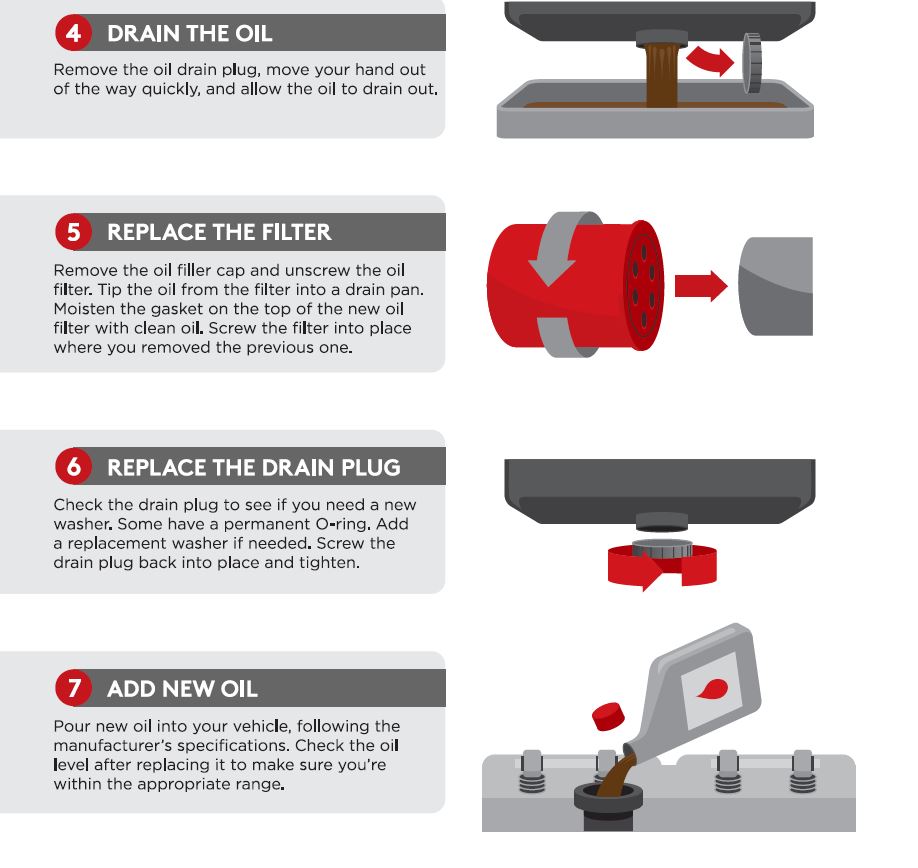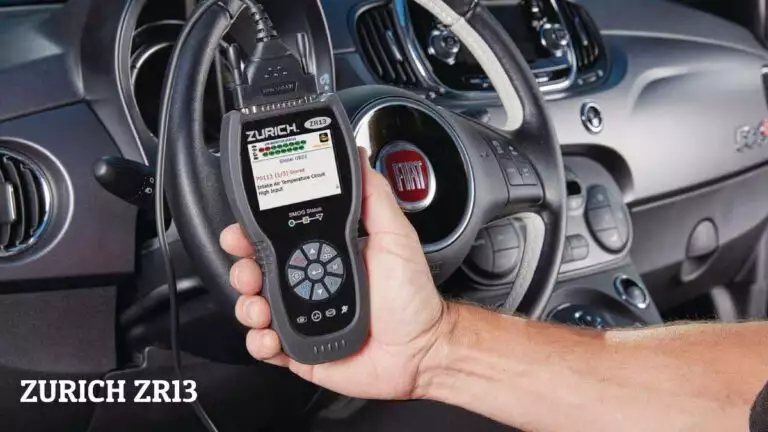Simple Guide: Changing Oil Filter During Oil Change
Changing the oil filter during an oil change is a simple and crucial step to maintaining your vehicle’s health and performance. By following a few easy steps, you can replace the old filter with a new one, ensuring that your engine stays clean and well-lubricated.
This guide will walk you through the process, providing you with all the necessary information. So, let’s get started!

Credit: www.toyotaofseattle.com
The Importance Of Changing Oil Filter
Regularly changing the oil filter during an oil change is crucial for maintaining a healthy engine. This simple step helps to remove impurities and debris from the oil, ensuring smooth engine performance and prolonging the life of your vehicle. Neglecting to change the oil filter can lead to engine damage and costly repairs in the long run.
Benefits Of Regular Oil Filter Changes
Regular oil filter changes improve engine performance and longevity.
Prevents harmful contaminants from circulating in the engine.
Enhances fuel efficiency by maintaining clean oil circulation.
Avoids costly repairs by protecting engine components from damage.
Consequences Of Not Changing The Oil Filter
Old oil filters lead to oil contamination and sludge buildup.
Reduces engine efficiency and can cause overheating issues.
Increases the risk of engine wear and potential breakdowns.
Compromises overall performance and shortens the engine’s lifespan.
Choosing The Right Oil Filter
When it’s time to change the oil in your vehicle, it’s important not to overlook the oil filter. The oil filter plays a crucial role in removing impurities and contaminants from the oil, which helps to protect your engine and keep it running smoothly. Choosing the right oil filter for your car can seem like a daunting task, but with a little knowledge and understanding, you can make an informed decision. In this guide, we will explore the different types of oil filters and the factors to consider when selecting one.
Understanding Oil Filter Types
Oil filters come in various types, each designed to suit different needs. Here are some common types of oil filters you may encounter:
| Type | Description |
|---|---|
| Mechanical Oil Filters | These traditional filters rely on a mesh or paper element to trap contaminants and prevent them from circulating in the engine. |
| Synthetic Oil Filters | These filters are made from synthetic materials that offer improved filtration efficiency and increased durability compared to mechanical filters. |
| Cartridge Oil Filters | These filters require the replacement of the filter element only, instead of the entire filter housing, making them more cost-effective and environmentally friendly. |
Factors To Consider In Selecting Oil Filters
When choosing an oil filter, there are several factors to consider:
- Type of Engine: Different engines require different oil filters. Consult your vehicle’s manual or speak to a mechanic to determine the right filter for your engine.
- Filtration Efficiency: Look for oil filters that provide high filtration efficiency, as this ensures that contaminants are effectively removed from the oil.
- Quality and Durability: Opt for filters that are manufactured by reputable brands and have a solid construction to ensure long-lasting performance.
- Compatibility: Ensure that the oil filter you choose is compatible with your vehicle’s make, model, and year to guarantee a proper fit and function.
- Cost: Consider your budget when choosing an oil filter. While it’s important not to compromise on quality, there are often options available at different price points.
By taking these factors into account, you can confidently select the right oil filter for your vehicle and maintain its optimal performance. Remember to change your oil filter regularly along with the oil to keep your engine healthy and extend its lifespan.
Tools And Supplies Needed
Prepare essential tools and supplies for changing your oil filter, including a wrench, oil filter wrench, new filter, and gloves. An oil catch pan, funnel, and rags will help keep the process clean and efficient. Ensure you have the correct filter size and oil type beforehand.
Tools and supplies are an essential aspect of changing an oil filter during an oil change. Having the right tools and supplies handy can make the process much smoother and efficient. In this section, we will discuss the essential tools needed and the supplies recommended for an oil filter replacement. Let’s dive right in!Essential Tools For Changing Oil Filter
When it comes to changing an oil filter, having the right tools will ensure a successful replacement. Here are the essential tools you’ll need: 1. Oil Filter Wrench: The oil filter wrench is a specialized tool designed to remove the oil filter. It provides a secure grip and allows for easy removal without damaging the filter or surrounding components. 2. Drain Pan: A drain pan is essential for catching the used oil as it drains from the filter. Choose a pan that can hold an adequate amount of oil and has a pour spout for easy disposal. 3. Rubber Gloves: Rubber gloves are necessary to protect your hands from coming into direct contact with the oil and prevent any skin irritation or contamination. 4. Shop Rags: Shop rags are handy for cleaning any spills or messes that may occur during the oil filter replacement process.Recommended Supplies For Oil Filter Replacement
In addition to the essential tools, it’s recommended to have the following supplies on hand for a smooth oil filter replacement: 1. New Oil Filter: Before starting the oil filter replacement, make sure you have a new filter that is compatible with your vehicle’s make and model. Refer to your vehicle’s manual or consult a professional to ensure you purchase the correct filter. 2. Fresh Oil: It’s a good practice to change the oil along with the oil filter. Having a fresh supply of oil will ensure optimal engine performance and longevity. Refer to your vehicle’s manual for the recommended oil type and quantity. 3. Oil Filter Gasket: Some oil filters require a gasket or O-ring to create a tight seal. If your filter includes a gasket, be sure to have a replacement on hand to ensure a proper fit and prevent leaks. 4. Oil Filter Sealant: In some cases, using oil filter sealant can help create a secure seal between the filter and the engine block, preventing any oil leakage. By having these essential tools and recommended supplies on hand, you’ll be well-prepared for a successful oil filter replacement during your next oil change. Remember to follow proper safety precautions and dispose of the used oil and filter responsibly. Happy oil changing!Step-by-step Guide To Changing Your Oil Filter
When changing the oil in your car, it is crucial to also replace the oil filter to maintain the efficiency of your engine. Follow this simple step-by-step guide to changing your oil filter.
Draining The Old Oil
- Locate the oil drain plug underneath your car.
- Position an oil pan under the drain plug to catch the old oil.
- Unscrew the drain plug using a wrench to allow the old oil to drain out completely.
- Wait for the oil to fully drain before replacing the drain plug securely.
Removing And Replacing The Oil Filter
- Identify the location of the oil filter in your vehicle’s engine compartment.
- Use an oil filter wrench to loosen and remove the old oil filter.
- Dispose of the old oil filter properly and avoid spills.
- Apply a thin layer of fresh oil to the gasket of the new oil filter.
- Install the new oil filter by hand and tighten it securely but not excessively.
- Refill the engine with the recommended amount of fresh oil.
- Start the engine to check for any leaks and ensure proper oil circulation.
Final Checks And Tips
After successfully changing the oil filter during an oil change, it’s crucial to perform a few final checks and follow some essential tips to ensure everything is in perfect order.
Checking For Leaks
Inspect the area around the oil filter and drain plug for ANY SIGN OF LEAKS. Start the engine and let it run for a minute, then check for any INDICATION OF LEAKAGE. ADD more OIL if necessary and tighten the filter or drain plug to PREVENT any LEAKS.
Proper Disposal Of Old Oil And Filter
It’s essential to dispose of the old OIL AND OIL FILTER properly. Place the used oil filter in a sealed plastic bag and take it to a LOCAL RECYCLING CENTER or an auto parts store that ACCEPTS USED OIL FILTERS. Pour the old oil into a LEAK-PROOF container and take it to the SAME LOCATION for proper disposal.

Credit: www.jimtaylormotors.com

Credit: www.tomobriengreenwood.com
Frequently Asked Questions On Simple Guide: Changing Oil Filter During Oil Change
Should The Oil Filter Be Changed During An Oil Change?
Yes, the oil filter should be changed during an oil change. This is important to remove contaminants and keep the engine clean, ensuring optimal performance and prolonging the life of the engine.
What Are Steps To Be Followed During Oil And Oil Filter Change?
To perform an oil and oil filter change, follow these steps: 1. Start your vehicle and let it run for a few minutes to warm up the oil. 2. Locate the drain plug underneath the engine and remove it to drain the old oil.
3. Remove the old oil filter using an oil filter wrench and replace it with a new one. 4. Replace the drain plug, tighten it securely, and pour fresh oil into the engine. 5. Dispose of the old oil and filter properly.
Do You Take The Oil Filter Out First When Changing Oil?
Yes, remove the oil filter first when changing oil to prevent oil spillage.
Is It Mandatory To Change Oil Filter During Oil Change?
Yes, it is important to change the oil filter during an oil change to maintain the cleanliness and efficiency of the engine. Regularly replacing the oil filter helps to remove contaminants and ensure smooth engine operation.
Conclusion
Maintaining your vehicle’s oil filter is key to its performance and longevity. By following this simple guide, you can confidently change your oil filter during routine maintenance. Keep your engine running smoothly and efficiently by staying on top of this essential task.
Don’t overlook the importance of proper oil filter maintenance.

